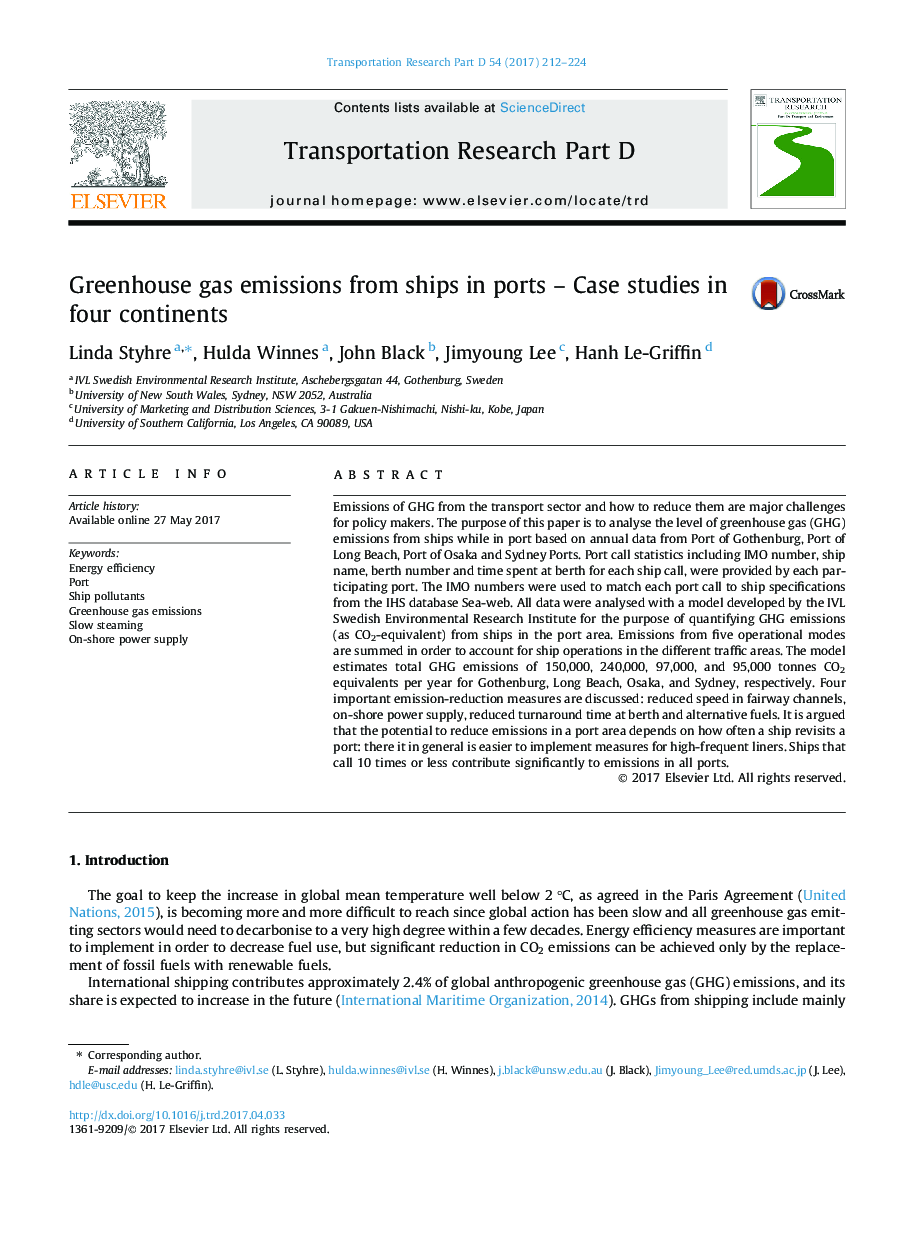| کد مقاله | کد نشریه | سال انتشار | مقاله انگلیسی | نسخه تمام متن |
|---|---|---|---|---|
| 5119229 | 1485870 | 2017 | 13 صفحه PDF | دانلود رایگان |
- GHG emissions from ships have been calculated and compared for four ports.
- Emission-reduction measures discussed are speed reduction, OPS, reduced time in port and alternative fuels.
- The “at berth” mode contributes to app. half of the ship emissions for the ports.
- The potential to reduce emissions depends on how often a ship revisits a port.
- International regulations are necessary to decrease the GHG emissions from ships.
Emissions of GHG from the transport sector and how to reduce them are major challenges for policy makers. The purpose of this paper is to analyse the level of greenhouse gas (GHG) emissions from ships while in port based on annual data from Port of Gothenburg, Port of Long Beach, Port of Osaka and Sydney Ports. Port call statistics including IMO number, ship name, berth number and time spent at berth for each ship call, were provided by each participating port. The IMO numbers were used to match each port call to ship specifications from the IHS database Sea-web. All data were analysed with a model developed by the IVL Swedish Environmental Research Institute for the purpose of quantifying GHG emissions (as CO2-equivalent) from ships in the port area. Emissions from five operational modes are summed in order to account for ship operations in the different traffic areas. The model estimates total GHG emissions of 150,000, 240,000, 97,000, and 95,000 tonnes CO2 equivalents per year for Gothenburg, Long Beach, Osaka, and Sydney, respectively. Four important emission-reduction measures are discussed: reduced speed in fairway channels, on-shore power supply, reduced turnaround time at berth and alternative fuels. It is argued that the potential to reduce emissions in a port area depends on how often a ship revisits a port: there it in general is easier to implement measures for high-frequent liners. Ships that call 10 times or less contribute significantly to emissions in all ports.
Journal: Transportation Research Part D: Transport and Environment - Volume 54, July 2017, Pages 212-224
